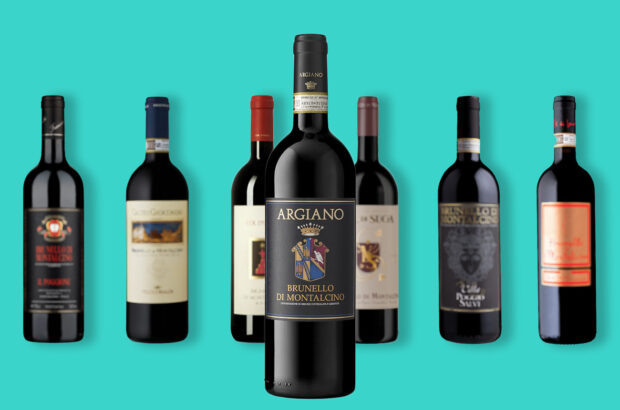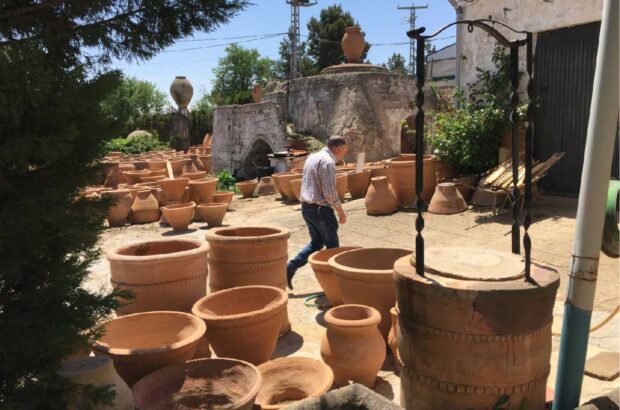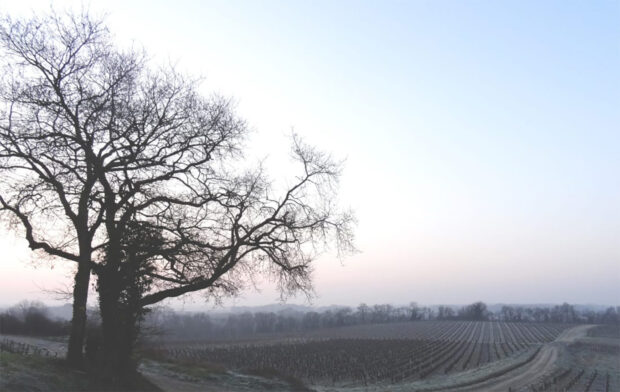Pomerol 1985
- The plateau, where the finest wines are found, is composed of four elements.
- The geological freak, the ‘buttonhole’ of clay at Pétrus.
- Cabernet Franc, highly prized and a vital ingredient in nearly all the best crus.
- Quality and character was made by the exceptional September.
It is easy to see the fascination with Pomerol. It is at once the smallest of the great Bordeaux appellations, yet within an overall framework produces wines of strongly contrasting personalities. A glance at the figures for the area under vine over a span of years shows how fully planted Pomerol has been at between 750 and 780 hectares (out of a possible 785). This is a smaller area than any of the great Médoc communal appellations; only Moulis and Listrac are slightly smaller. Then take a look at Professor Enjalberts’ map of the geology of the area and you begin to understand the complexity of the region.
Enjalberts’ study of Pomerol’s soils in his classic work on the Libournais shows that the plateau of Pomerol, where all the finest wines are to be found, is in fact composed of four elements, plus the famous clay ‘buttonhole’ at Pétrus. At its heart is the Günz terrace, then on the western side a significant erosional slope (which one is most conscious of when driving from Libourne past châteaux La Pointe and Nenin). Then come the Mindel terraces, middle and lower. Like the eroded slope, the soil is sandy gravel, partly sand-covered.
Yet even the vineyards on the central high plateau can produce markedly different wines – think of Vieux Château Certan, Lafleur and La Fleur-Pétrus, for instance. The least distinguished soils are found in the west of the appellation, north and northeast of Libourne and to the north of the Libourne-Périgord road. The soil here is light and sandy on recent gravel deposits. To return to that geological freak, the ‘buttonhole’ of clay at Pétrus, two adjoining châteaux share a portion of it: L’Evengile and Vieux Château Certan (Gazin used to, before its portion was sold to Pétrus). But, of course, it is only at Pétrus that its full effect can be savoured. The other properties, however, have traits in common, their vines planted on such clayey soil: Merlot does best, followed by Cabernet Franc, but Cabernet Sauvignon seldom ripens fully here. The norm in Pomerol is for 80 to 90 per cent Merlot in the vineyard, but there are some interesting exceptions. L’Evangile, not far from Cheval Blanc, has 35 per cent Cabernet Franc and its neighbour, La Conseillante, has 30 per cent, as does Vieux Château Certan. In spite of its minority role, Cabernet Franc is highly prized in Pomerol, as in Saint-Emilion, and is a vital ingredient in nearly all the best crus.
Moving from the mosaic of soils to the vintage itself: 1985 has somehow become sidelined, stranded, as it were, between the monumental 1982 and the 1989s and 1990s that closed off this remarkable run of years. Yet no vintage of this decade has proved more consistent throughout the region. Balance and charm have been its hallmarks. 1986 produced more spectacular Cabernets in the Médoc, but was noticeably more uneven in quality. The year began with exceptionally cold weather in January. Temperatures of minus 15°C were commonplace, with some places in the Gironde registering even lower below freezing. The flowering was uniform, in spite of showery weather in early summer. The quality and character of the vintage was made by the exceptional September, the driest on record, with only four millimetres of rain falling during the whole month, compared with 28mm in 1961, the previous driest year. And with seven days of temperatures exceeding 30°C, it was hotter than 1982 or 1966.
As for yields, although 1985 set new records by exceeding the total crop of 1982, Pomerol made less wine, and the yield was lower than for the fine vintages of 1989, 1990 or 1995. Thus, perfectly ripened Merlot was combined with yields that were good but not excessive, always a difficult balancing act where this grape is concerned.
To summarise: in a good year all round, the Merlot was of exceptional quality and nowhere did it do better than in Pomerol. Here, at least, 1985 must be accounted one of the best years of this highly successful decade.











